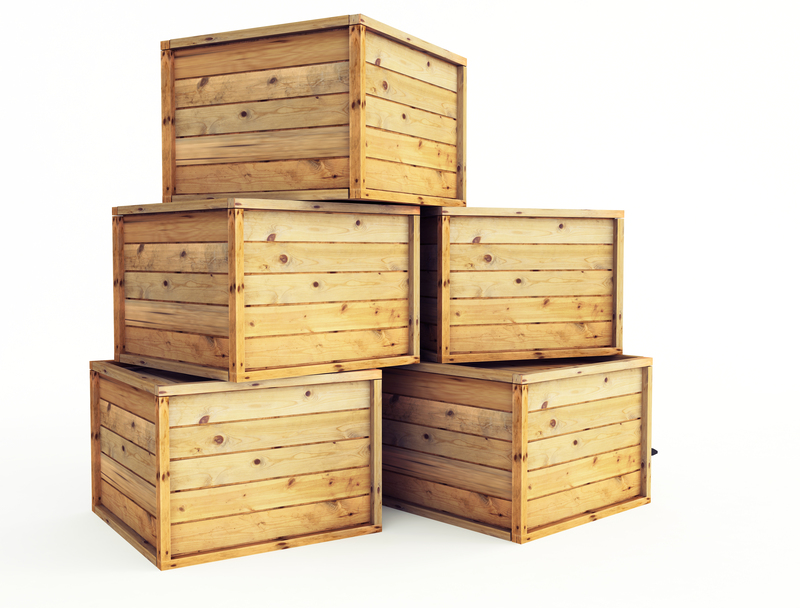Protect Your Lounge: Specialist Methods for Lasting Storage
Posted on 17/05/2025
Protect Your Lounge: Specialist Methods for Lasting Storage
Preserving your lounge furniture is an essential step if you want it to stand the test of time, maintain appeal, and sustain value. Whether moving, remodeling, or simply seeking a seasonal solution, proper storage methods ensure your lounge suite--sofa, ottoman, recliners, and soft furnishings--remains in superb shape for years. In this comprehensive article, we explore specialist techniques for protecting your lounge furniture during storage, offering readers actionable advice and insider tips on how to maximize both safety and longevity.

Why Is Lounge Furniture Storage So Important?
The Costly Consequences of Neglect
Overlooking correct lounge storage methods can cause early wear, unsightly stains, and lasting damage. Exposure to dust, humidity, pests, or fluctuating temperatures wreaks havoc on delicate upholstery, wood, and foam. Investing time and care in proper storage protects your furniture's appearance, comfort, and resale value.
- Prevents mold and mildew growth on fabrics and foam padding
- Stops wood warping or splitting under adverse conditions
- Guards against pests like moths and rodents that may chew or nest
- Helps retain color and finish by reducing UV and humidity exposure
The Benefits of Specialist Storage Solutions
Adopting specialist storage methods for your lounge suite can mean the difference between a treasured heirloom and an irreparably damaged piece. Professional advice, high-quality packing materials, and climate-controlled spaces are all components of successful, lasting storage.
- Guaranteed longevity--Protect lounge sets for months or years without worry
- Simplified moving process--Well-stored furniture is easier to retrieve and reassemble
- Peace of mind--No unpleasant surprises when lounge furniture comes out of storage
Preparing Your Lounge Furniture for Storage
1. Deep Clean Before You Store
Start your lounge protection journey with a thorough cleaning. This step is critical: dirt, food particles, skin oils, or crumbs can turn into stains or attract pests during storage.
- Vacuum all crevices, cushions, and textile surfaces
- Spot-clean stains according to fabric care labels
- For leather lounges, use a specialist leather cleaner; for fabrics, use mild upholstery foam
- Let all surfaces dry completely before packing to prevent mildew
2. Disassemble Where Possible
Specialist lounge storage methods often suggest disassembling large pieces wherever possible. This step protects protruding parts and makes storage far more space-efficient.
- Remove detachable legs, arms, or backrests--wrap these separately
- Keep all hardware in clearly labelled bags taped to the related furniture part
- Flatten or roll loose cushions to save space and preserve shape
3. Apply Surface Protection
Expert storers use premium packing materials for wrapping lounge furniture. Avoid plastic wrap directly on upholstery, as trapped moisture can cause fungus growth. Instead, opt for breathable covers.
- Use soft cotton sheets or specialized furniture covers for fabric lounges
- Wrap leather furniture in acid-free paper under a breathable cover
- Cover wooden or metal feet with foam padding or moving blankets
Choosing the Best Location for Lounge Storage
1. Climate Controlled Storage - The Gold Standard
Long-term lounge storage is best achieved in a climate-controlled facility. Maintaining stable temperature and humidity is key to preventing cracks, mold, and material breakdown.
- Choose units that offer year-round climate regulation (ideal temperature: 55-75?F; humidity: 35-50%)
- Verify the facility has strong security and pest control protocols
- Avoid basements, sheds, or garages unless they are thoroughly waterproofed and pest-proof
2. Home Storage: What to Watch For
Storing your lounge at home? Pick a dry, shaded area out of direct sunlight--such as a spare bedroom or insulated attic. Never place lounge furniture directly on basement or garage floors without waterproofing measures.
- Elevate pieces on palettes or risers to avoid ground moisture
- Allow air circulation around all sides for breathability
- Install a dehumidifier if dampness is a concern
- Keep furniture away from vents, windows, and heat sources
Pest and Mold Prevention: Advanced Techniques
1. Deterring Insects and Rodents
Lounge protection excels when you guard against invaders. Moths, silverfish, and mice feast on soft furnishings or create nests.
- Use herbal repellents like lavender sachets or cedar blocks inside lounges and covers
- Avoid chemical mothballs--they can damage fabric and create unpleasant odors
- Seal storage space cracks and check regularly for rodent droppings or signs of intrusion
2. Stopping Mold and Mildew
Lasting lounge storage depends on humidity control and good airflow.
- Add desiccant packs (silica gel or clay) inside cushion storage bags
- Never wrap furniture tightly in non-breathable plastic--always allow some air exchange
- Check stored lounge furniture every few months for musty smells or mildew spots, and air pieces outside on dry, sunny days if possible
Specialist Packing Materials and Techniques
Recommended Materials for Lounge Furniture Protection
- Acid-free tissue paper: Keeps delicate fabrics and leather from yellowing
- Moving blankets and felt pads: Prevent scratches and cushion against impact
- Bubble wrap: Only for wooden or metal components; avoid against upholstery
- Breathable furniture bags: Keep dust out, let moisture escape
Pro Techniques for Secure Wrapping
Use wide painter's tape to hold covers or blankets in place--never duct tape, as adhesive can transfer onto your furniture.
- Wrap each item individually to prevent scratches during stacking
- Never stack heavy objects on top of lounge suites--foam and frames can deform permanently
- Label all covered pieces for easy retrieval
When to Consider Professional Lounge Storage Services
Signs You Need a Specialist
Sometimes, DIY lounge storage has its limits. If your lounge furniture is antique, extremely valuable, or especially delicate, consider a professional storage and handling service.
- Professional handlers provide packing, transport, and climate-controlled storage
- Insurance and condition reporting provide extra peace of mind
- They can also reassemble your set or clean it before delivery
How to Retrieve Lounge Furniture After Storage
Safe Unpacking and Reassembly
When it's time to bring your lounge furniture home, careful handling ensures it's ready for use.
- Unwrap in a clean, open area free from dust and pets
- Inspect for pests, mold, or damage before moving indoors
- Let items air out if they've been stored for more than a few months
- Reassemble according to labelled hardware bags
- Spot-clean or treat leathers and textiles to freshen up

Common Mistakes in Lounge Storage - and How to Avoid Them
What NOT to Do
- Skipping a cleaning step: Always deep clean, even if the furniture seems superficially clean.
- Using plastic directly: Never wrap sofas or chairs in plastic; moisture and condensation can ruin fabric and cause odors.
- Piling heavy objects: Flat objects may seem safe to place on top of a lounge, but even lightweight boxes can compress foam or upholstery.
- Neglecting pest preventative measures: One mouse or moth infestation can devastate expensive lounge sets.
- Storing in unsuitable spaces: Garages, open sheds, and damp basements are notorious for ruining furniture. Always prioritize a dry, temperature-stable environment.
Conclusion: Achieve Lasting Lounge Protection
Preserving your precious lounge furniture isn't just about safe-keeping--it's about investing in years of future comfort, elegance, and functionality. By utilizing specialist lounge storage methods, you create the best possible conditions for your lounge's longevity.
Choose quality packing materials, select a climate-controlled storage location, apply pest and mold deterrents, and handle furniture with the care it deserves. A little preparation now ensures your lounge suite will continue to offer style and relaxation for many years to come.
Key Takeaways for Lasting Lounge Storage:
- Deep clean before storing to avoid stains and pests
- Use breathable covers and suitable wrapping materials
- Opt for climate-controlled storage for the best protection
- Regularly check for mold or pests
- Consult professionals for high-value or antique pieces
Protect your lounge, and it will reward you with longevity, comfort, and beauty for years to come. Bookmark this guide as your go-to reference for all your lounge storage needs!









